Featured Articles
Atlas Was Never in Military, But Remains Sternest Drill Instructor in Boxing
Teddy Atlas never served in the armed forces of the United States, but the longtime ESPN boxing commentator and occasional trainer always has felt a special affinity for the regimentation that is a major part of a soldier’s life. In many ways Atlas is a drill instructor or commanding officer who brooks no dissent on those occasions when he issues a Staten Island-accented order. Whenever Atlas aligns himself with a fighter, a process which he undertakes now only after painstaking investigation, his first directive is always that it’s his way or the highway.
It was only after such a laborious study of his newest pupil, Timothy Bradley Jr., that Atlas, 59, decided to return to the corner. It probably is no coincidence that Bradley (32-1-1, 12 KOs), who defends his 147-pound strap against Brandon “Bam Bam” Rios (33-2-1, 24 KOs) in the HBO-televised main event on Nov. 7 at the recently renovated Thomas & Mack Center in Las Vegas, has dubbed himself “Desert Storm,” which suggests military precision, attention to detail and coolness under fire.
OK, so the 32-year-old Bradley also never wore a uniform or toted a rifle. His nickname, he says, owes in part to the fact he makes his home in the desert – that would be Palm Springs, Calif. – and in part because of his action-heavy style and respect for those who serve or have served their country with honor and distinction.
The pairing of Atlas and Bradley has the feel of an orderly chain of command that any veteran of the Army, Navy, Marine Corps, Air Force or Coast Guard would recognize. When they begin preparations for the Rios bout, it’s Atlas who will be pulling rank because, well, that’s the way it has to be whenever he becomes involved with a fighter.
“It’s a big responsibility,” Atlas said of taking on a fighter for the first time since he parted ways, acrimoniously, with Alexander Povetkin in January 2012. “That’s the way I’ve always looked at these things. You’ve got somebody’s career – and their life, to an extent – in your hands. They put their trust in you so you got to be sure you can get the job done and done right.
“I spent several days thinking about it (accepting Bradley’s request for Atlas to train him). I went back and forth, going over so many things. It wasn’t an easy decision. It would have been very easy to say no instead of yes. I was hesitant at first, but what I knew about the kid in terms of his character – not only in the ring, but in his personal life – was a factor.
“Actually, my daughter Nicole helped convince me to do this. She also had a part in my deciding to train Povetkin. With Povetkin, I said no several times and he and his people continued to ask. Nicole said, `Why don’t you go to Russia and at least give it a chance? Because that’s who you are, Dad. You’re a really good commentator, but in your heart you’re still a teacher and a trainer.’”
Toward the end, after 2½ years together in which Atlas helped take Povetkin to the WBA “regular” heavyweight title, the fighter began to chafe at some of the trainer’s dictums. Povetkin didn’t want to travel from Russia to the U.S. to train as he been doing, which was a precondition of their working together because of Atlas’ broadcasting commitments to ESPN. Nor did Povetkin agree – or, at least, his manager, Vladimir Hryunov didn’t – with Atlas’ assessment that the still-learning fighter had not progressed enough to accept a title bout with IBF/WBO/WBA/lineal champion Wladimir Klitschko in 2010. Povetkin did wind up challenging Klitschko on Oct. 5, 2013, with Alexander Zimin as his chief second, and he demonstrated that he still wasn’t ready in being easily outpointed by Floyd Mayweathersque margins.
Atlas came away from the experience feeling “betrayed,” but then he had been down that road before and understood that loyalty in boxing is a fragile commodity. One notable example of the friction that is the byproduct of a relationship gone sour is the nasty falling-out in the early 1980s between Atlas and future light heavyweight champion Donny Lalonde.
“He ran things like an Army camp,” Lalonde complained of Atlas’ demanding training methods. Atlas doesn’t dispute that assessment. In fact, he’s rather proud of it. What was that recruiting slogan from a few years ago? Oh, yeah. There’s strong, and there’s Army strong.
“Donny Lalonde is not wrong,” Atlas said. “I do run things like an Army camp. But I will never apologize for doing things the way I did, and still do. And that way served Lalonde damn well. Yeah, I was in charge and there was a reason I was in charge. I was the trainer, and I had the responsibility.
“The strange thing is that Lalonde literally begged me to train him. He came all the way from Canada on his own dime. I told him no. He came to Gleason’s Gym (in Brooklyn, N.Y.) where I was training other fighters and he just pursued me. But I didn’t follow my best instincts, which was that there was something about him I just couldn’t trust.”
Atlas learned his craft during seven years of apprenticeship under the legendary Cus D’Amato in Catskill, N.Y. The pay wasn’t good – actually, nothing – but the education he received from the man who had guided Floyd Patterson and Jose Torres to world championships was so invaluable that maybe a price tag shouldn’t be attached to it.
“I have respect for the sport,” Atlas said. “I spent all that time learning my craft and making no money with Cus. I don’t regret spending those seven years in the gym. You lock yourself away, if you will, to make that commitment and that sacrifice.”
But although Atlas loved D’Amato almost like another father, he began to see another side to the old man after a teenaged Mike Tyson showed up, renewing Cus’ dream of having another heavyweight champion. A petulant Tyson acted out at times, but wasn’t reprimanded for it. Atlas, primarily responsible for training the young slugger, personally barred him from participating in an upcoming amateur tournament by way of punishment, then was stunned to see Tyson walk through the door anyway, with D’Amato’s approval. Atlas’ authority in the gym had been undercut, and he was left with the realization that there is no such thing as a trainer’s absolute control, unless both parties mutually consent to such an arrangement and stick to it no matter what.
Other fighters have drifted in and out of Atlas’ life, more often adhering to his mandates for only so long until they came to the conclusion that they were the bosses, not the ones to be bossed around. And any proposed changes in the relationship, Atlas made it clear, were non-negotiable.
“Before I had that safety net of the commentating, which I’ve had for 18 years, I felt that way to an extent,” he said of the pressure some trainers feel to stick with recalcitrant fighters who provide their primary or sole source of income. “I might have to think about something two or more times before I said no.”
Perhaps the most memorable example of Atlas at his prickly best was the night that Michael Moorer was in the process of dethroning IBF/WBA heavyweight champion Evander Holyfield on April 22, 1994, in Las Vegas. Moorer was winning, all right, but not following Atlas’ instructions to the letter.
“I just sat on the stool and said, `You don’t want to fight. You don’t want to win this damn thing, so I’ll fight,’” Atlas said at the time. “Get outside, give me the water and I’ll take your place.’ And I made him say to me that he wanted to fight before I would get up. I said, `You don’t want to fight.’ He said, `No, I do.’ Thank God.”
So what was it about Bradley, who recently parted ways with his longtime trainer, Joel Diaz, that swayed Atlas into again slipping into the trainer’s role he has been so reluctant to assume?
“He was a guest on my radio show (on Sirius XM) a couple of months ago,” Atlas recalled. “It was right after his fight with (Jessie) Vargas. There was a controversial ending to that fight in that (Bradley) got nailed and hurt by a really big right hand with about 30 seconds left in the last round. With Vargas going after him, the referee, Pat Russell, erroneously stopped the fight. He heard the 10-second clapper and he thought it was the bell. Everybody – including Vargas and Bradley – that the fight had been stopped and Vargas had won. Vargas even started celebrating.
“We talked about whether Bradley could have survived another 10 seconds, and being the gladiator he is, he said he could have. And then I asked him a question: `Do you know why you got hurt?’ He said, `Well, I got hit with a right hand, Teddy.’ I said, `Of course, but do you know WHY?’ He said, `No, Would you tell me?’
“I told him he had his left hand low, but he had a James Toney-type shoulder roll before he went to throw his own right hand. The problem was he did it a little prematurely sometimes before he got Vargas’ right hand out of the way. Basically, Timmy was telegraphing that his own right hand was coming. It gave Vargas a clear runway to catch him when his left hand was down.”
Bradley went back home to Palm Springs, studied the tape of the fight, spotted the problem and wondered why no one else had detected it. Not long after that, he called Atlas to ask if he would consider becoming his new chief second.
Burned in the past, Atlas was unsure whether he wanted to expose himself to another flame of disappointment.
“It’s become very easy for me to say no, especially after what happened with Povetkin,” Atlas said. “It would have been easy to say no again. But I was going out to California anyway, to do the PBC on ESPN fight between (Abner) Mares and (Leo) Santa Cruz. I spent two days after that fight with Bradley. I broke down tape of his fights with Vargas and (Ruslan) Provodnikov like I would for ESPN viewers. I pointed out some things to him that he hadn’t realized.
“I went home and spent several more days thinking about it. I went back and forth on so many things. I talked to my family again. Then I called Timmy up and said, `OK.’”
But it wasn’t the 32-year-old Bradley’s star status or potential for improvement that was the deciding factor for Atlas. He’s turned down other talented fighters without so much as a second thought. There was something about Bradley, though, that resonated.
“You are who you are,” Atlas said. “And what you are as a fighter is connected to who you are as a person, and that goes to your background, you past, your upbringing. I liked the way Timmy carried himself, with respect and a certain quiet toughness. He had a standard of conduct that was obvious and, quite frankly, you see less and less in society today.”
Bradley, the father of three children with his manager-wife, Monica, and the stepfather of two of her kids from a previous marriage, understands that he and Atlas share a bond that at least partly transcends boxing.
“Teddy don’t have a million fighters. Teddy was retired,” Bradley noted. “I told him, `Hey, man, you can’t hide all that knowledge. You got to pass it on.
“The reason why Teddy is doing this is because of the person that I am. I’m a family guy; he’s the same way. He’s also a guy with a high boxing IQ. He hasn’t trained fighters in years, but he’s trained some of the best in the world.
“He has the time. He’s going to work it out with his schedule. I’m his only fighter. It’s a great fit, man. I can learn a lot from Teddy.”
So it’s back to boot camp for Atlas, whose military experience, such as it is, has been limited to occasionally working with the West Point boxing team and his friendship with two-time Super Bowl winning coach Bill Parcells, who was an assistant at Army and the head coach at the Air Force Academy before moving on to the NFL.
“Someone told me that when Parcells left the Giants and Ray Handley took over, some of the players were asked at training camp what the difference between them was,” Atlas said. “They said, `Oh, it’s much better now, much nicer, much easier, much more player-friendly. Handley is not a dictator like Parcells was.’ It was very similar to what Lalonde said about me.
“Yeah, it was much better until the season started and they weren’t winning. Then those guys found out it wasn’t better. It was misery and a disaster.”
So what happens the next time a fighter in need of a make-over seeks out Atlas? Is there training life for him beyond Timothy Bradley Jr.?
“I saw how Timmy was in his house, as a husband and father,” Atlas said. “I saw what’s important to him, and to me. I decided if I was going to come back and train, it was going to be for a person like this.
“Timmy said, `Anything you ask me to do, I’ll do.’ I could tell it wasn’t just lip service. I think I’m pretty good at being able to read people. Lalonde told me some of the same things, but I didn’t follow my best instincts then, which was that there was something about him that I just shouldn’t trust.
“My experience with him affected me. I said to myself, `The next time someone comes to me unsolicited, I’m going to pay more attention to my instincts. So here we are, 30 years later. When Timmy told me he’d do what I told him to do, no questions asked, I believed it. There is a truthfulness to him. It’s kind of refreshing, really.”
-

 Featured Articles3 weeks ago
Featured Articles3 weeks agoThomas Hauser’s Literary Notes: Johnny Greaves Tells a Sad Tale
-
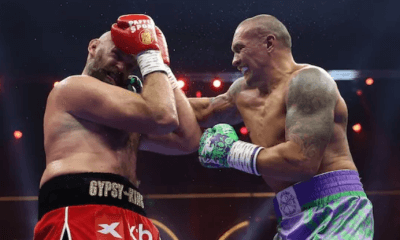
 Featured Articles2 weeks ago
Featured Articles2 weeks agoBoxing Notes and Nuggets from Thomas Hauser
-
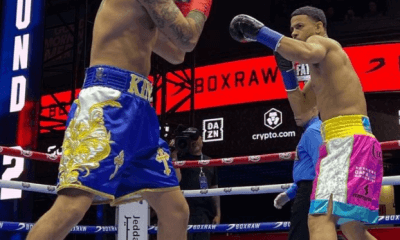
 Featured Articles4 weeks ago
Featured Articles4 weeks agoRolly Romero Upsets Ryan Garcia in the Finale of a Times Square Tripleheader
-
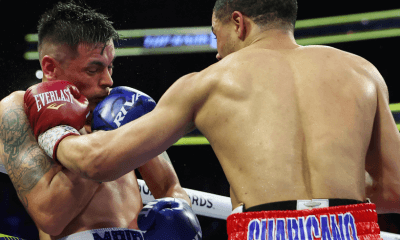
 Featured Articles4 weeks ago
Featured Articles4 weeks agoUndercard Results and Recaps from the Inoue-Cardenas Show in Las Vegas
-
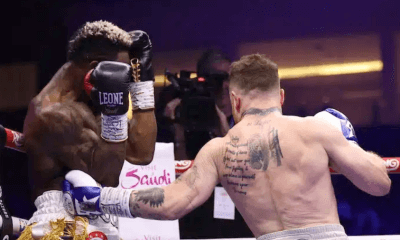
 Featured Articles4 weeks ago
Featured Articles4 weeks agoCanelo Alvarez Upends Dancing Machine William Scull in Saudi Arabia
-
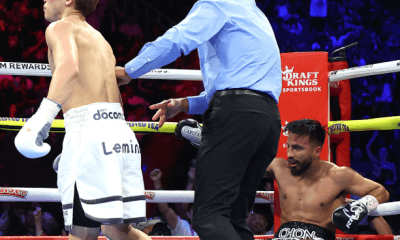
 Featured Articles4 weeks ago
Featured Articles4 weeks agoBombs Away in Las Vegas where Inoue and Espinoza Scored Smashing Triumphs
-
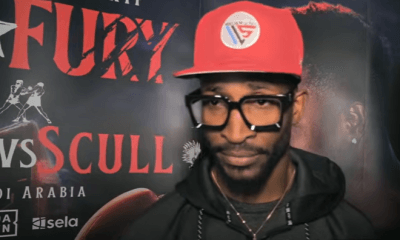
 Featured Articles4 weeks ago
Featured Articles4 weeks agoArne’s Almanac: The Good, the Bad, and the (Mostly) Ugly; a Weekend Boxing Recap and More
-
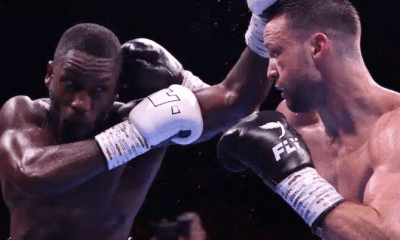
 Featured Articles1 week ago
Featured Articles1 week agoEkow Essuman Upsets Josh Taylor and Moses Itauma Blasts Out Mike Balogun in Glasgow



















